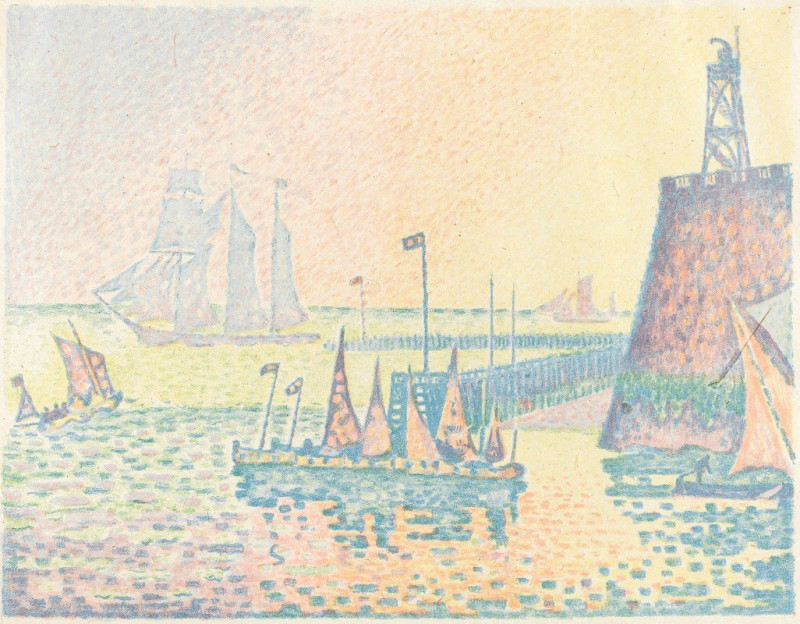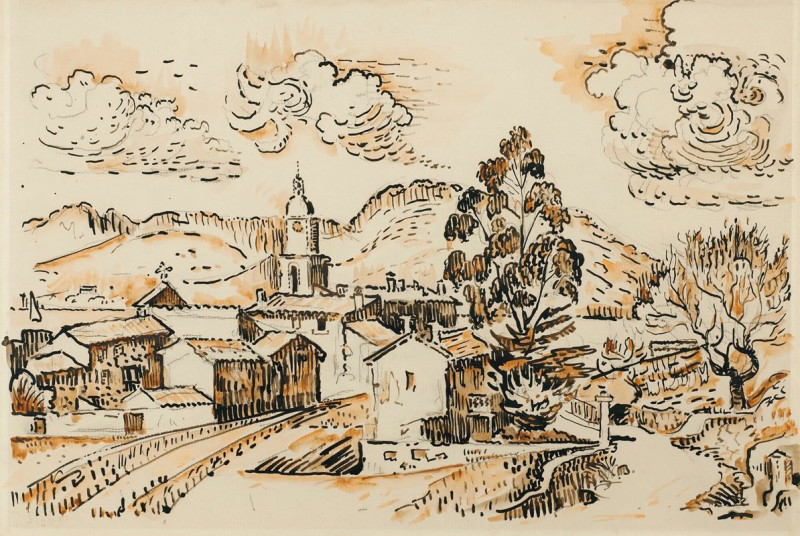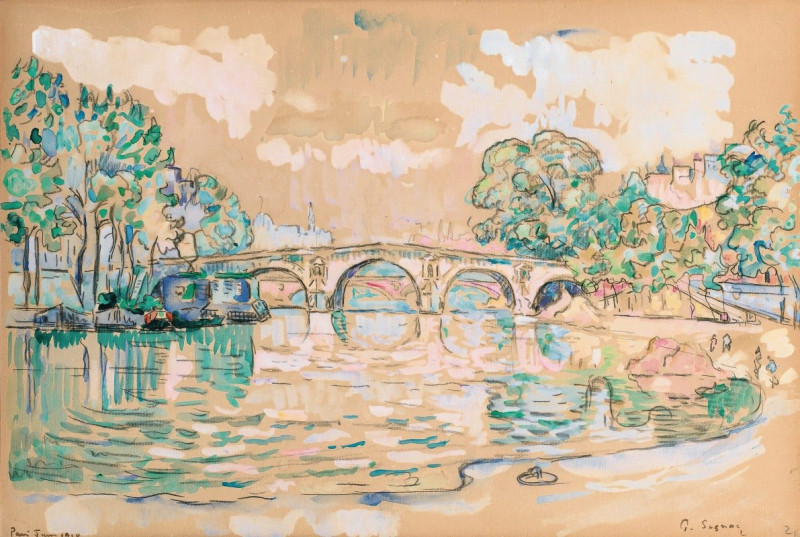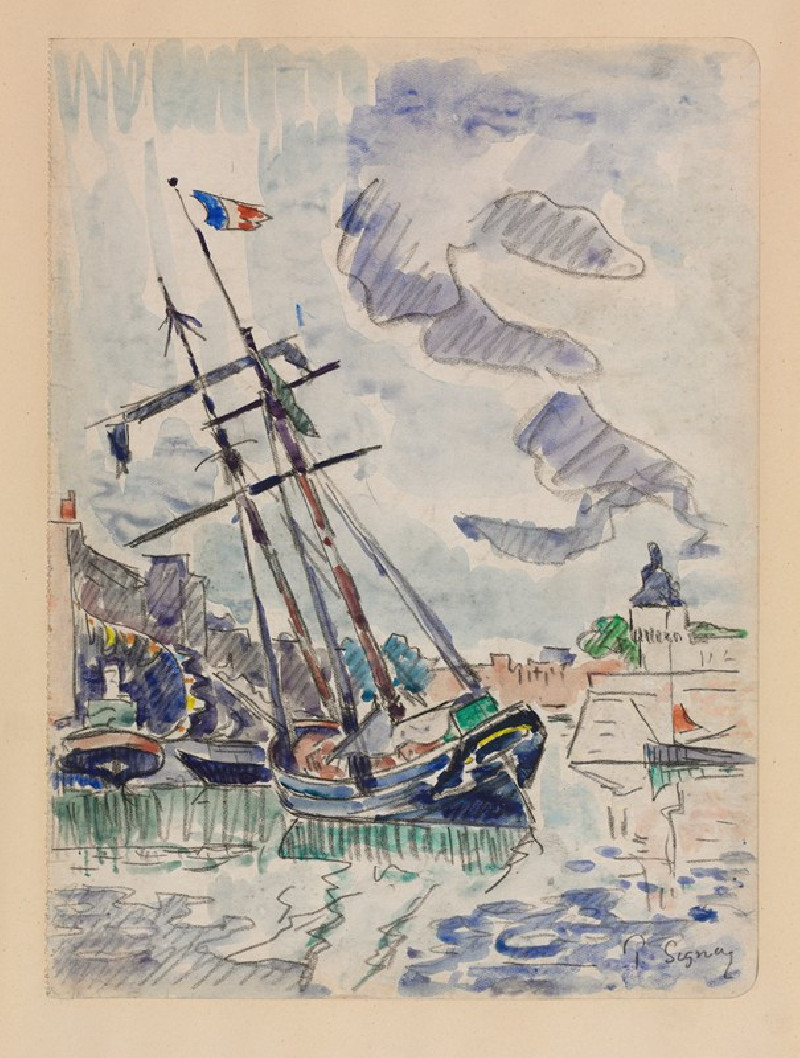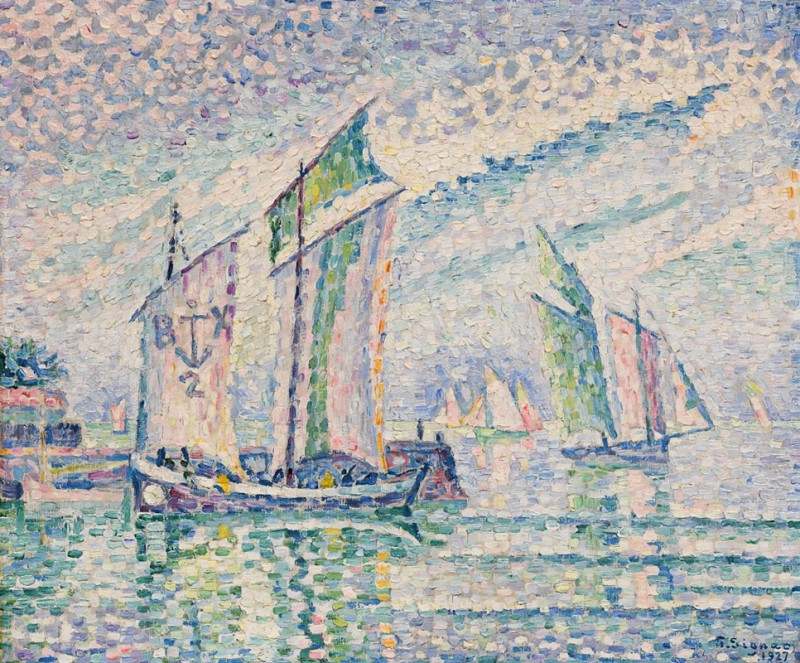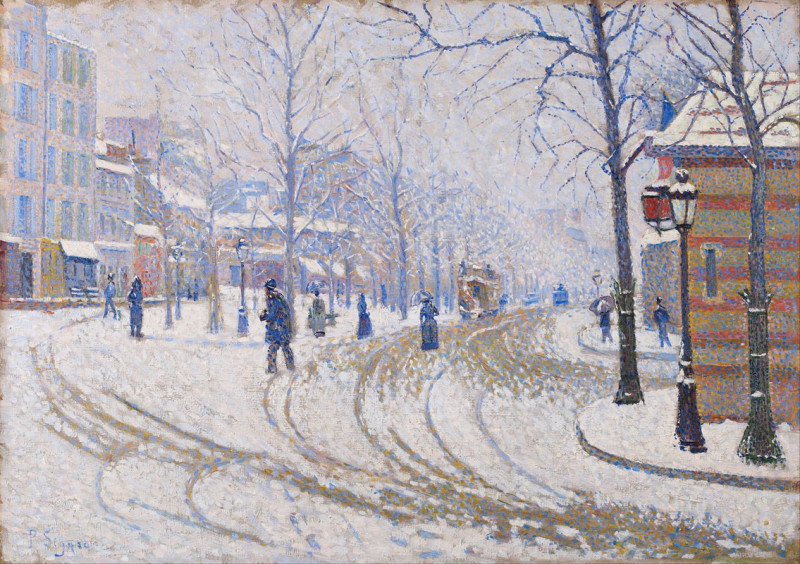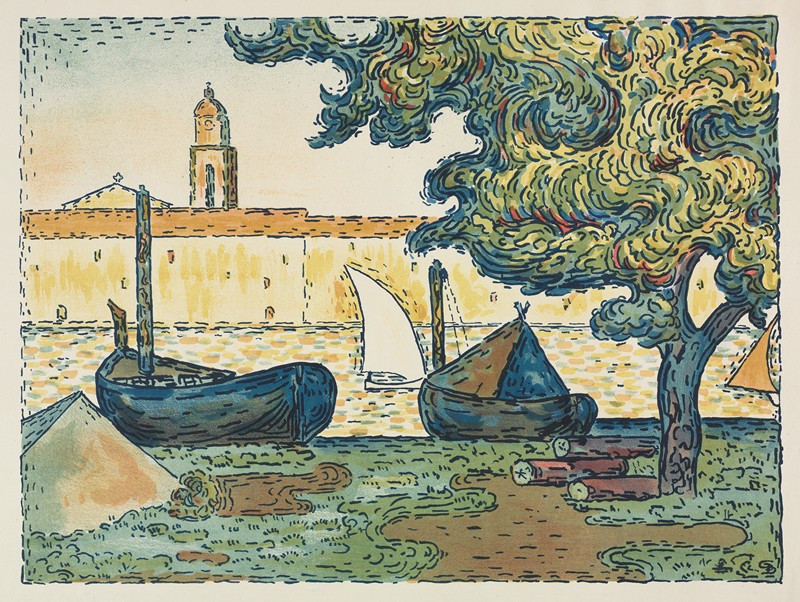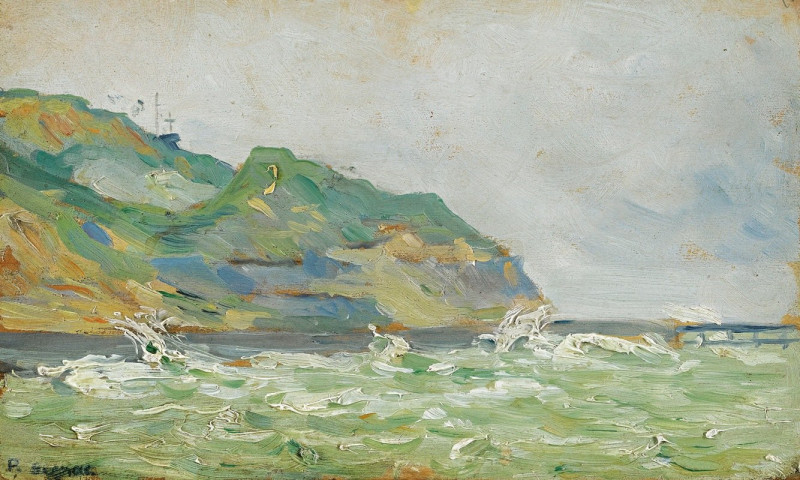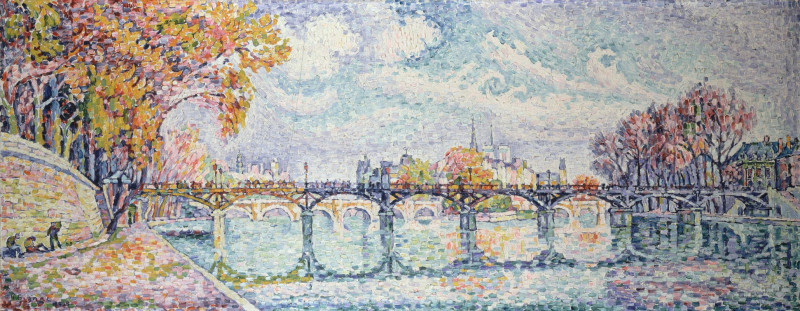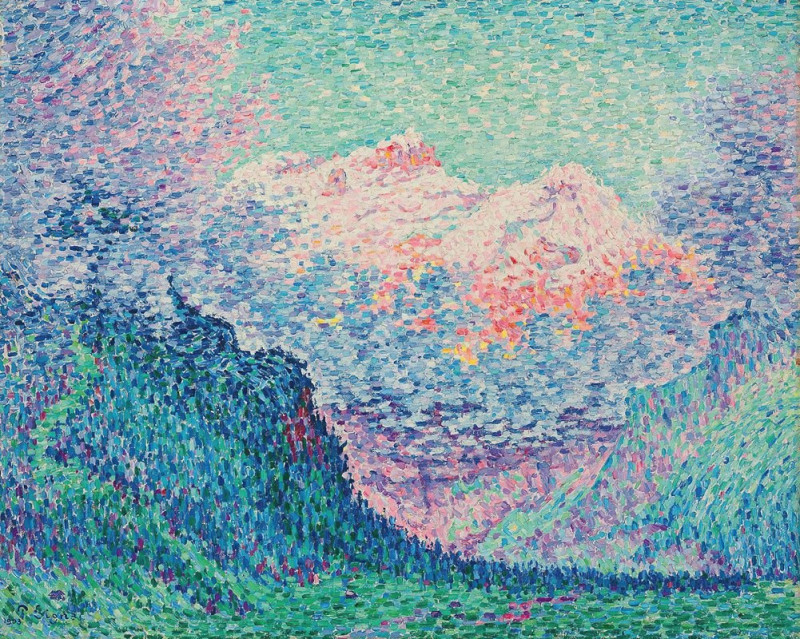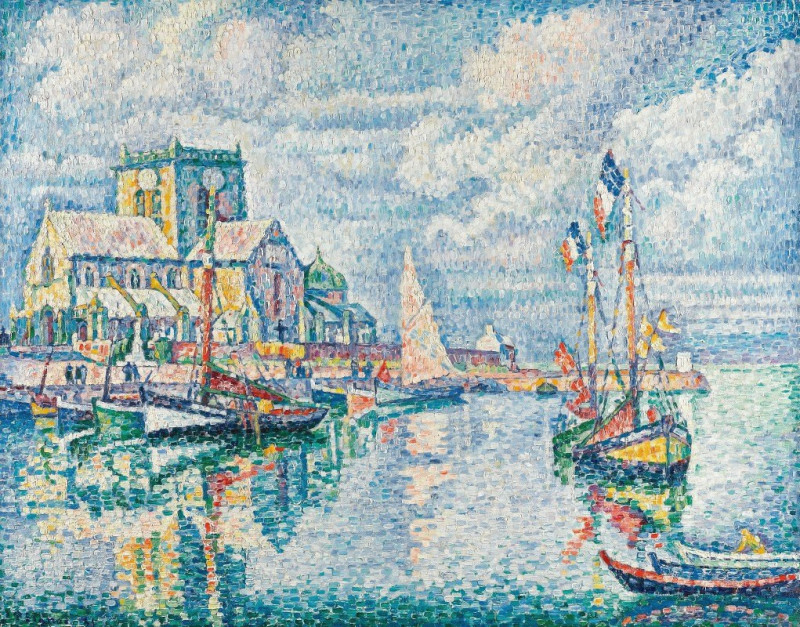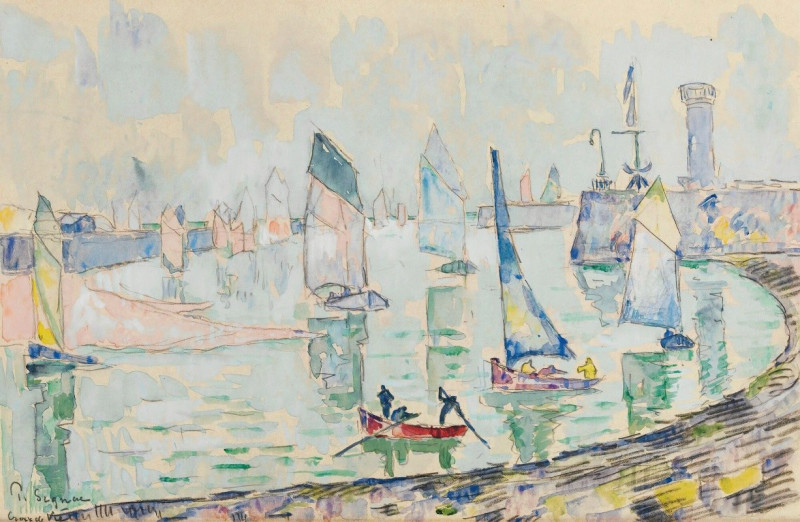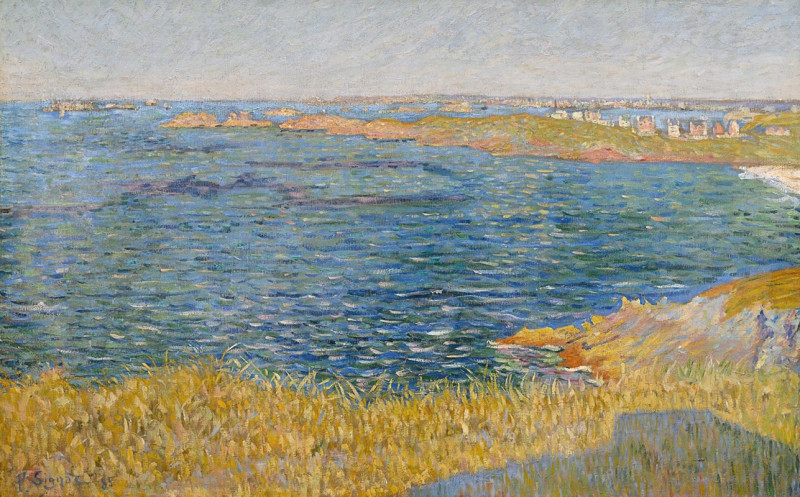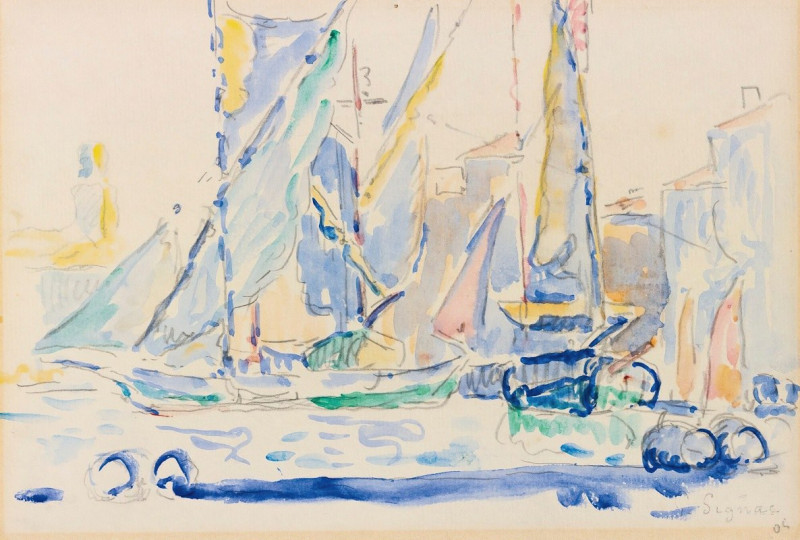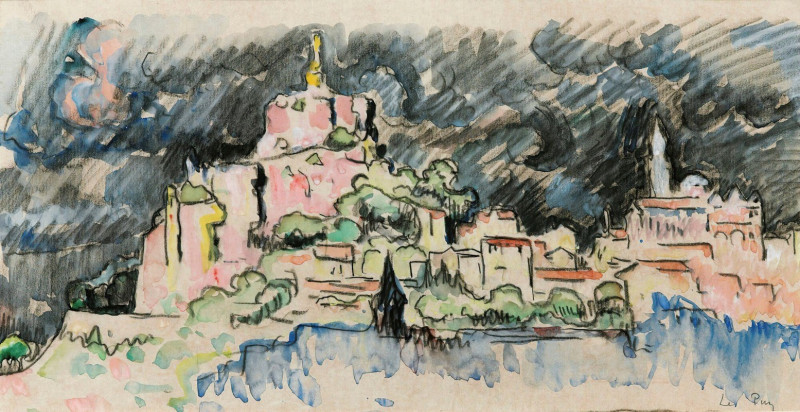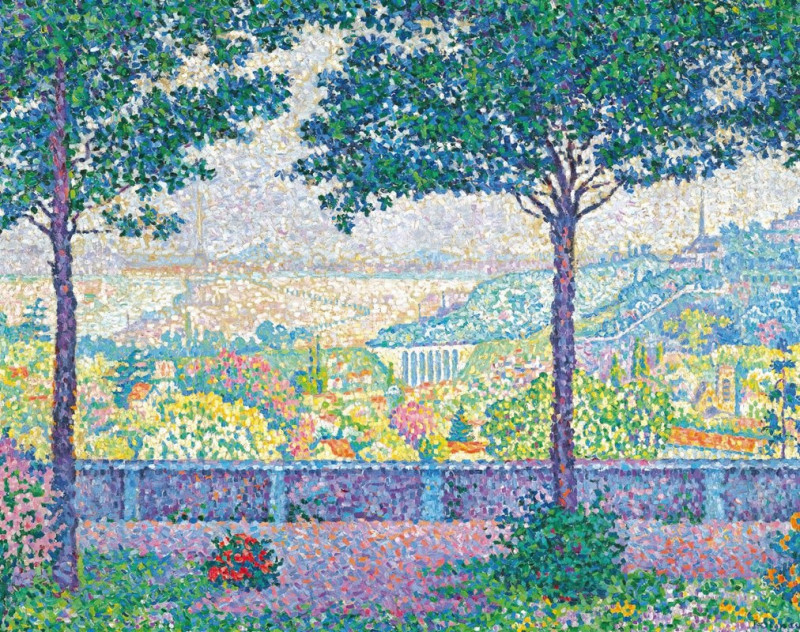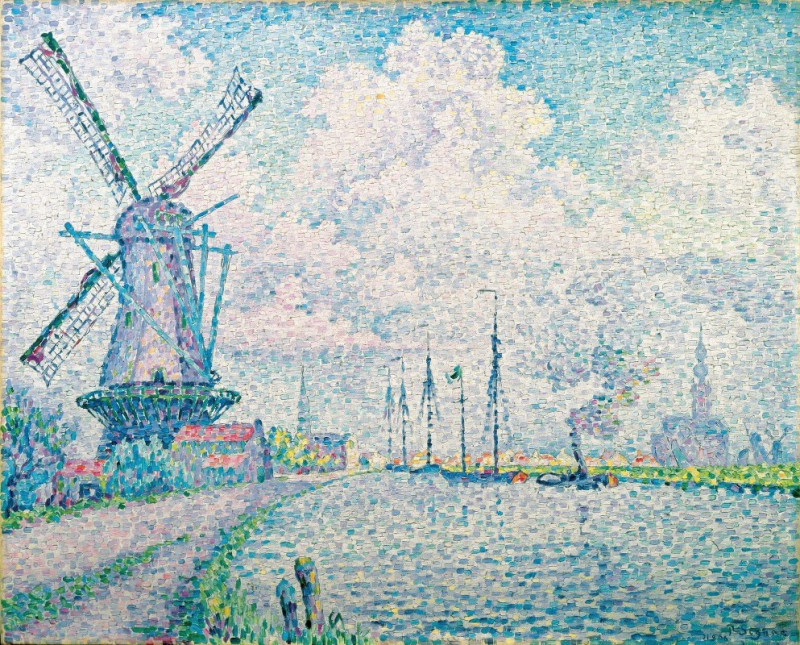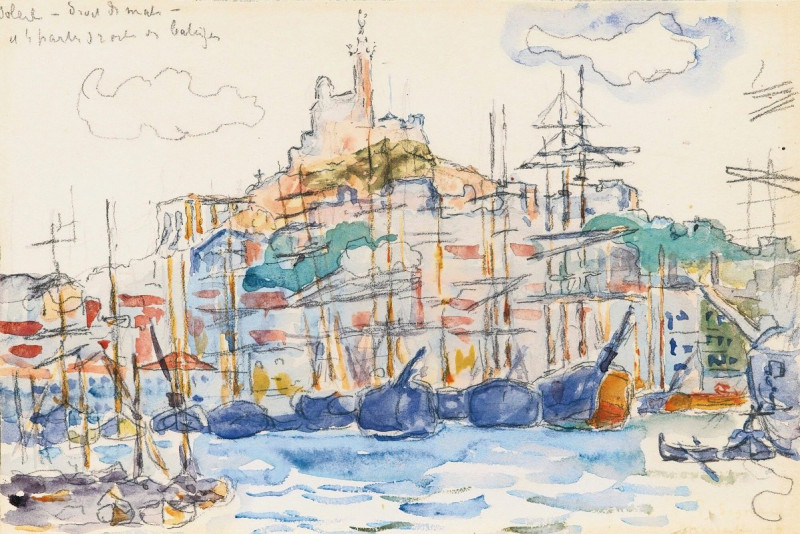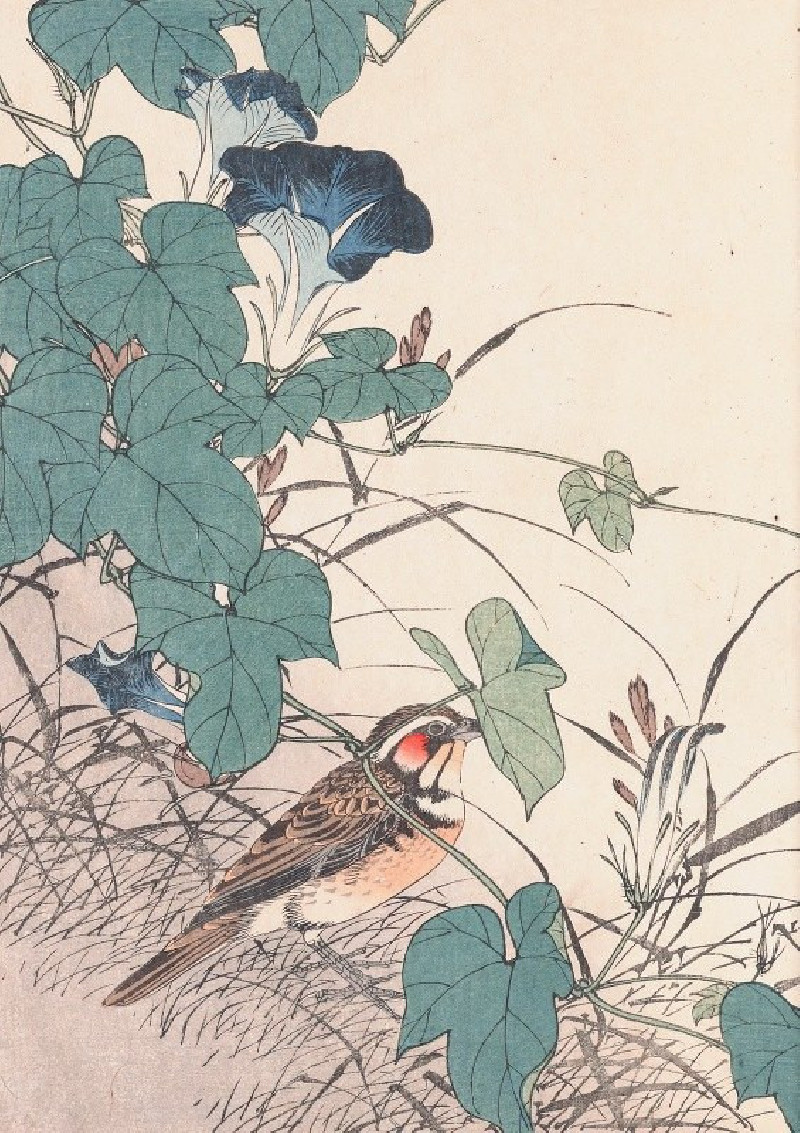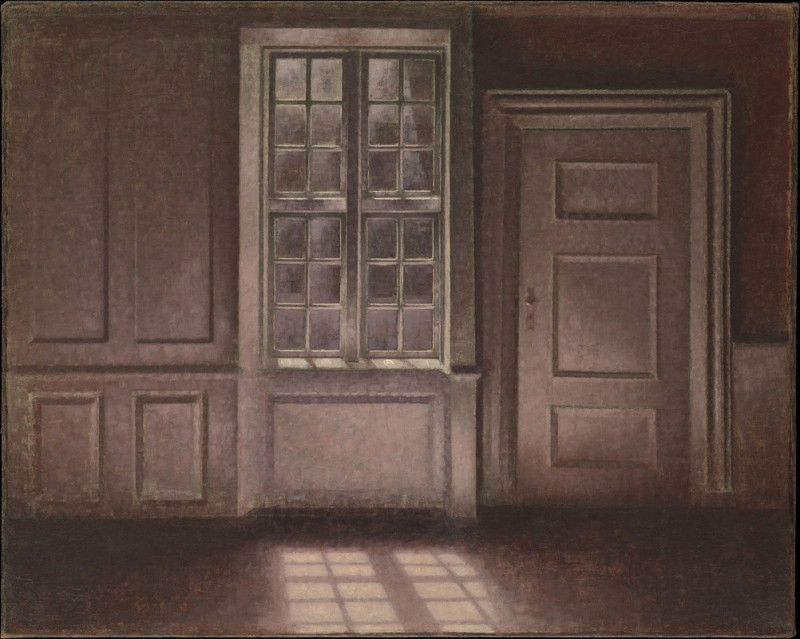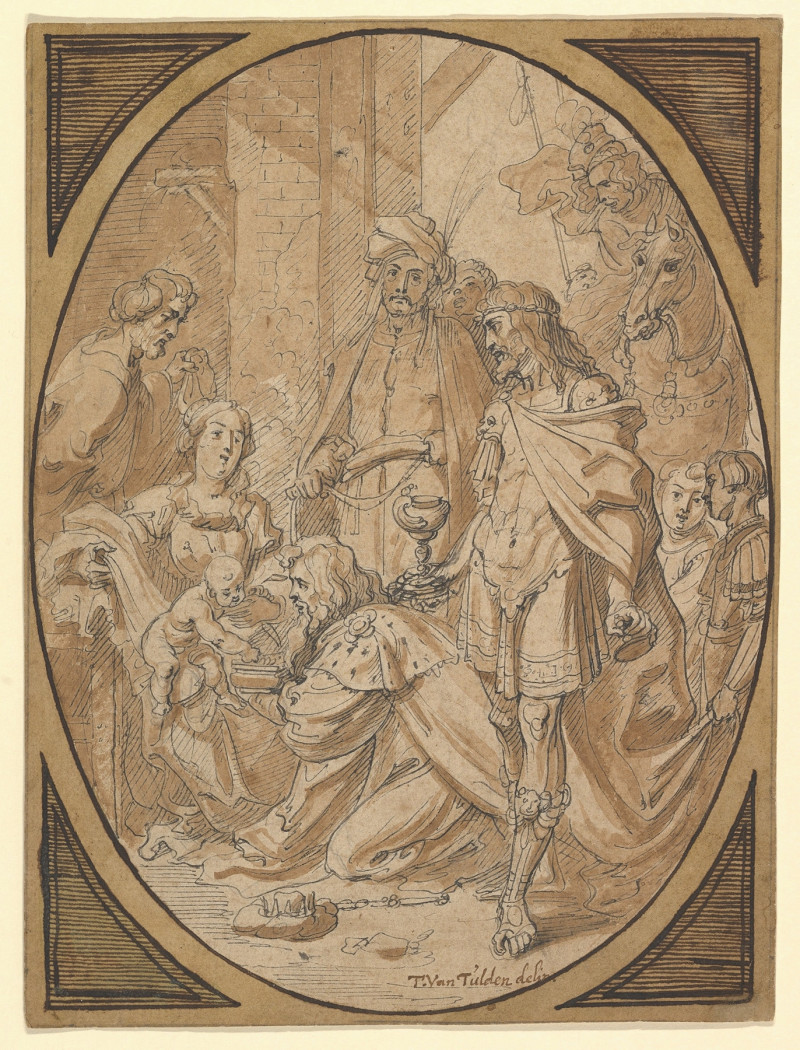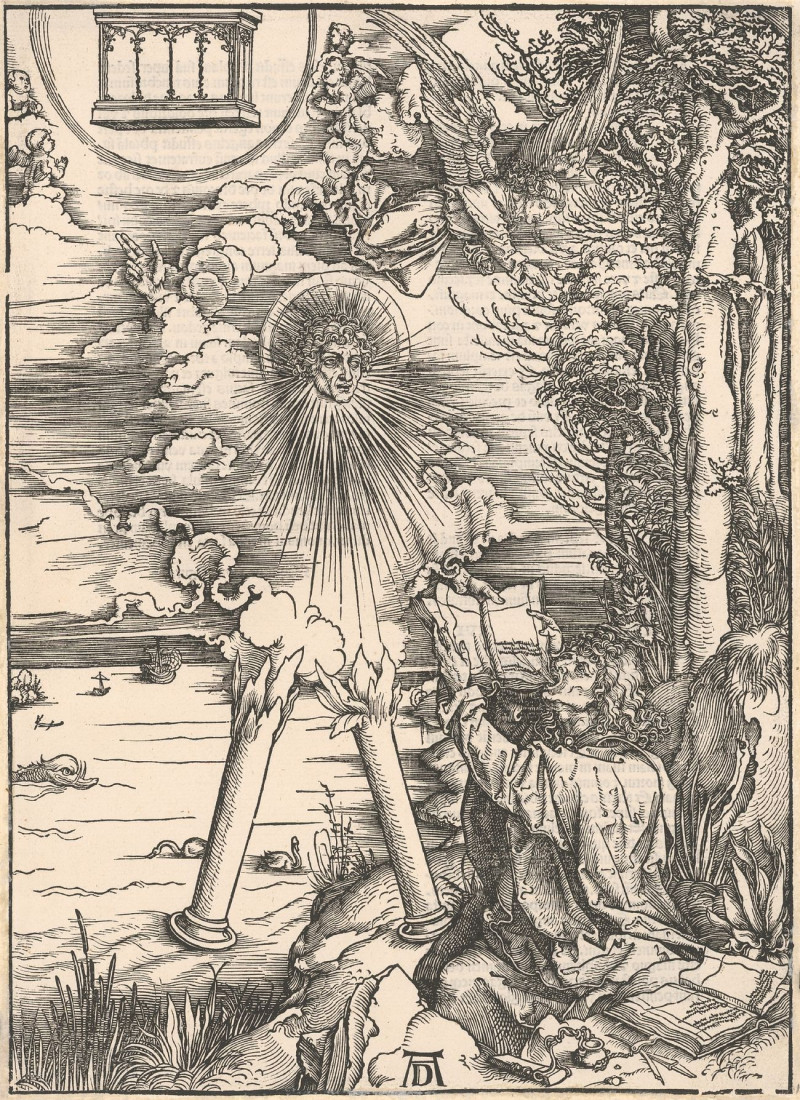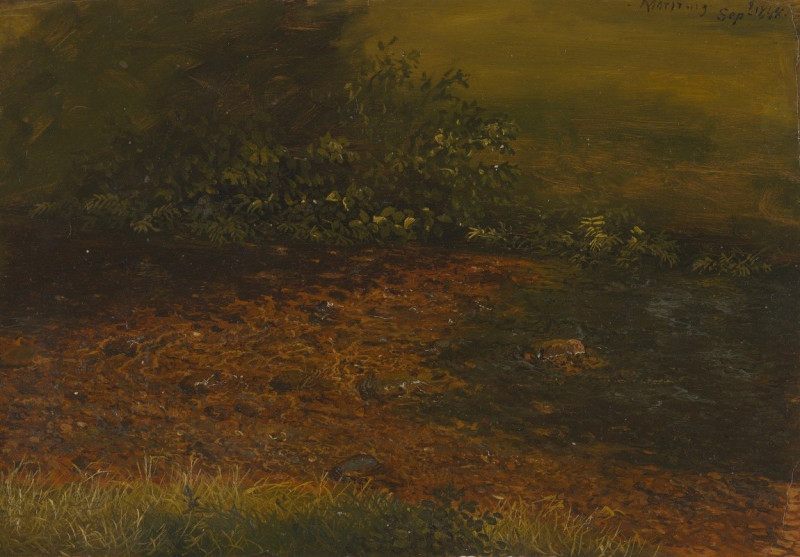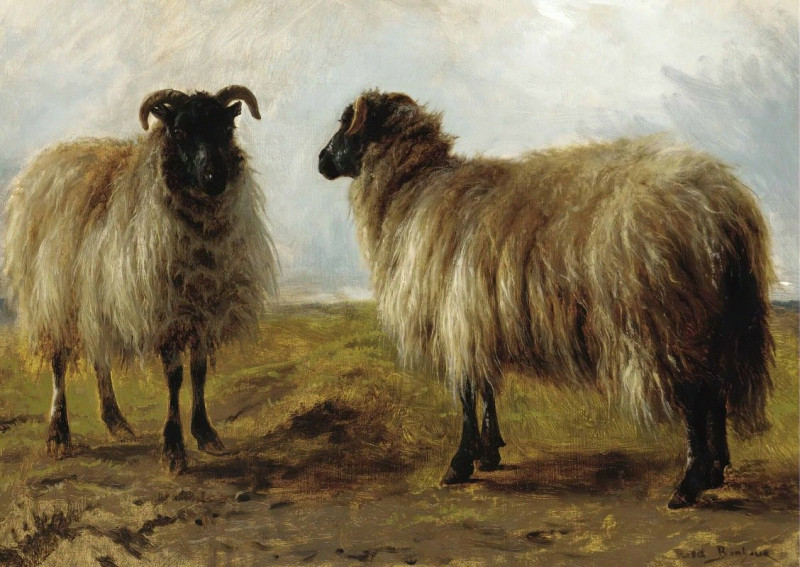Evening (Le soir) (1898)
Technique: Giclée quality print
Recommended by our customers
More about this artwork
Paul Signac's painting "Evening (Le soir)" from 1898 is a serene depiction of a maritime scene at dusk, showcasing the artist's mastery in the pointillist style. In this artwork, Signac captures the tranquil atmosphere of a harbor as the day draws to a close.The foreground of the painting features an array of small sailing boats, gently bobbing on the shimmering water that reflects the soft hues of the evening sky. These boats are detailed with meticulous strokes of color, suggesting the calm movements of water and wind. To the right, a large, robust lighthouse stands prominently, its structure dotted with vibrant oranges and reds, contrasting with the subtle blues and greens of the sea and sky.Further into the background, a majestic large sailing ship moves gracefully across the horizon, its sails catching the last lights of the day. The sky, awash in pale yellows and pinks, sets a contrasting backdrop to the gentle aquatic and architectural elements.Signac’s use of pointillism, a technique involving the application of small, distinct dots of color that together form an image, is evident and effectively used to convey the changing light conditions of the evening. The overall effect is a peaceful panorama that invites viewers to appreciate the quiet beauty of a seaside evening, rendered through a harmonious symphony of colored dots that resonate with the tranquility of the fading day."Evening (Le soir)" is not just an ordinary seascape; it is an evocative reflection on nature's rhythms and the peaceful end of a day by the sea, crafted by a master of color and light.
Delivery
Returns
Paul Signac (1863-1935) was a French Neo-Impressionist painter. Together with Georges Seurat, Signac developed the Pointillism style. He was a passionate sailor, bringing back watercolor sketches of ports and nature from his travels, then turning them into large studio canvases with mosaic-like squares of color. He abandoned the short brushstrokes and intuitive dabs of color of the impressionists for a more exact scientific approach to applying dots with the intention to combine and blend not on the canvas, but in the viewer's eye.

